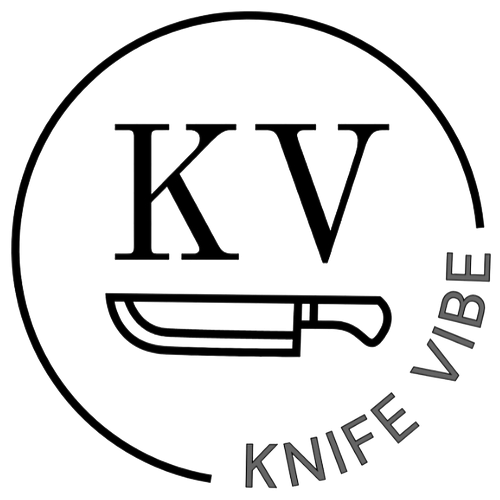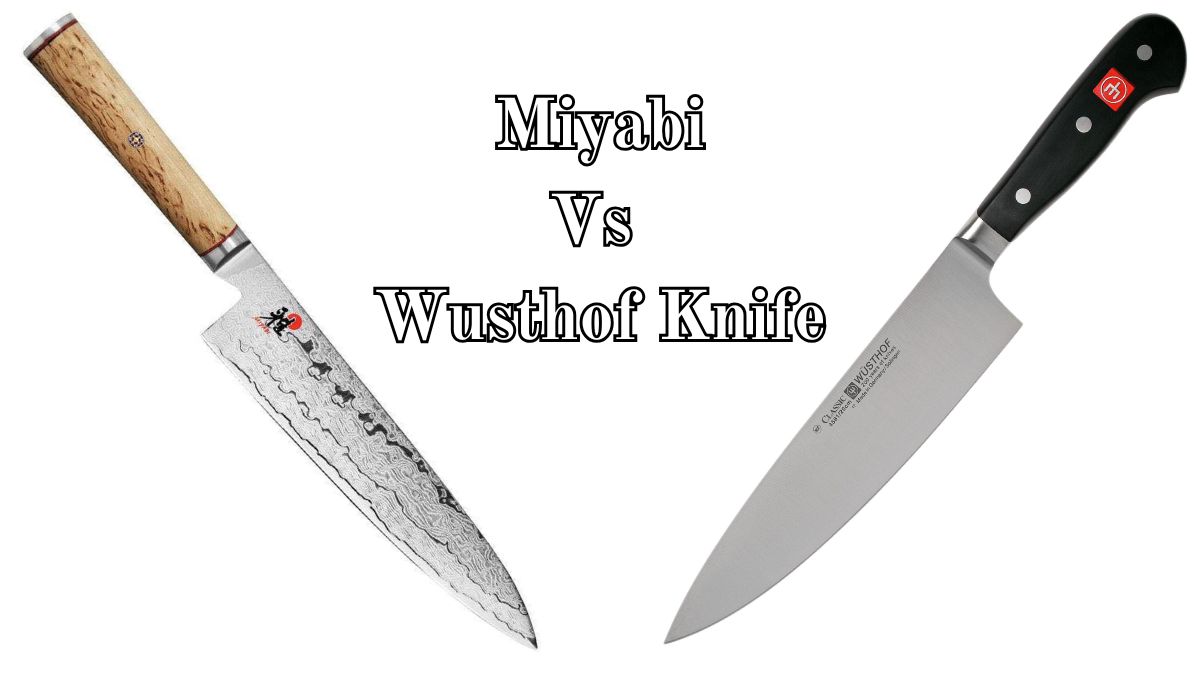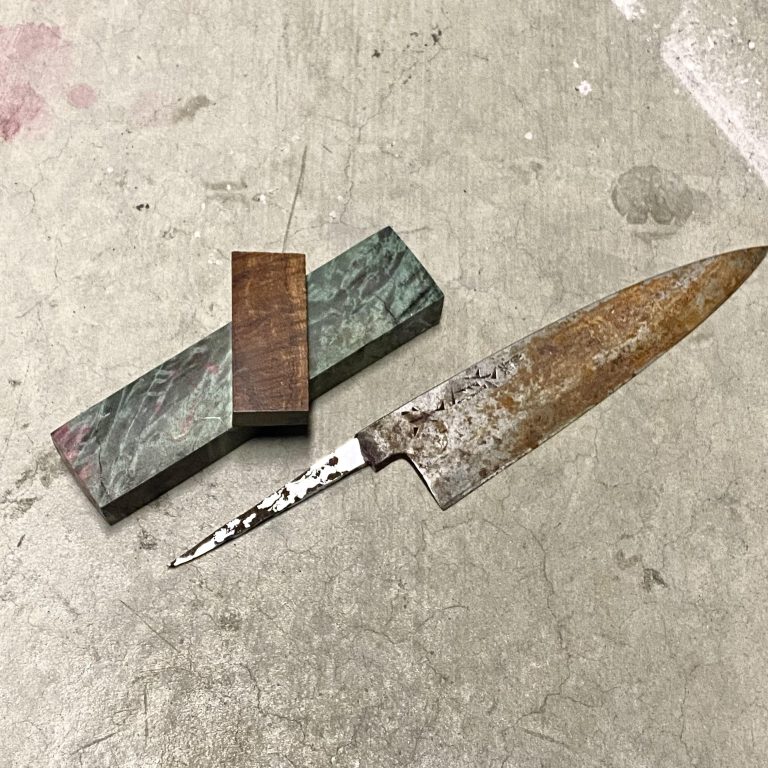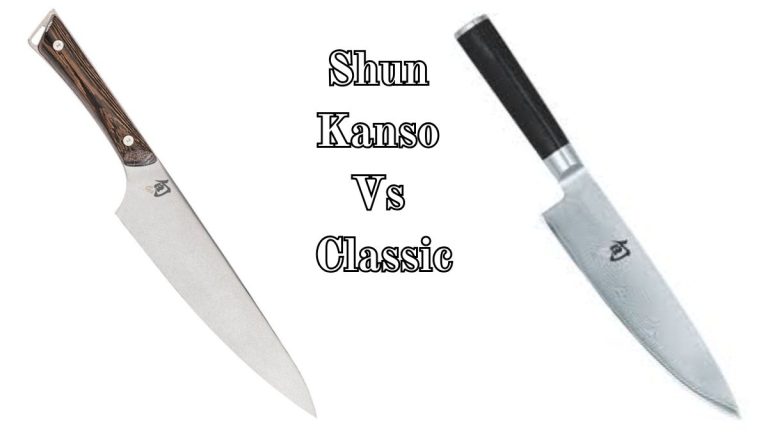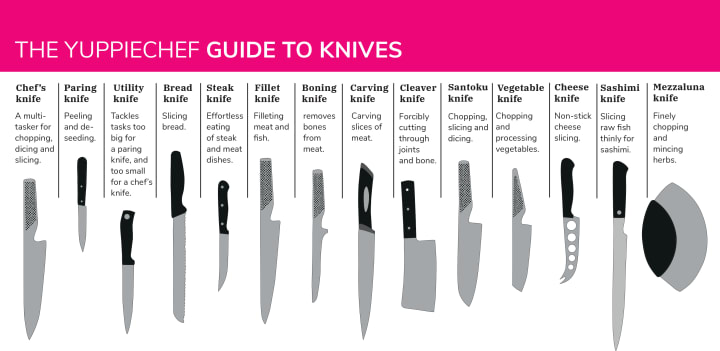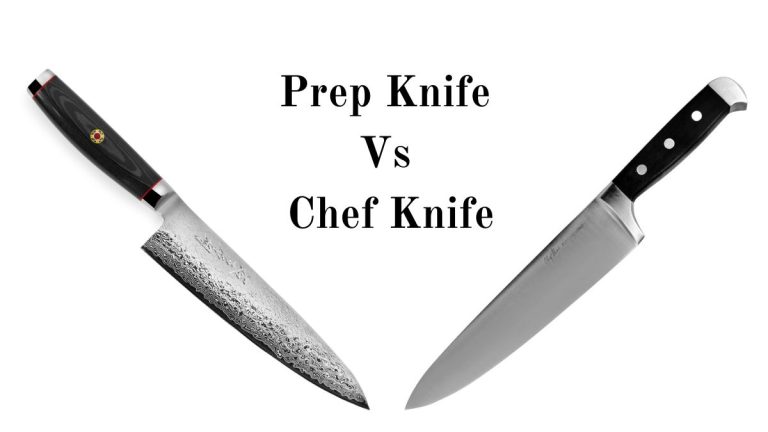Wusthof Vs Miyabi: Battle of the Best Kitchen Knives
Choosing the right kitchen knife can be tricky. Wusthof and Miyabi are top choices.
Both brands have unique features and benefits. Wusthof, a German brand, is known for its durability and precision. Miyabi, from Japan, is famous for its sharpness and beautiful design. Comparing these two helps you find the best fit for your kitchen needs.
Understanding their differences can make a big difference in your cooking experience. Whether you are a professional chef or a home cook, knowing which knife suits you better is essential. This blog will explore the strengths of Wusthof and Miyabi, guiding you to make an informed decision. Stay tuned as we delve into the details of these remarkable knives.
Introduction To Wusthof And Miyabi
When it comes to high-quality kitchen knives, two brands stand out: Wusthof and Miyabi. Both brands have a rich history and are known for their exceptional craftsmanship. This blog post delves into their brand history and reputation in the market.
Brand History
Wusthof is a German brand that has been in the knife-making business since 1814. The company started in Solingen, a city famous for its blade production. Wusthof knives are made with precision and care, maintaining a strong tradition of quality.
Miyabi, on the other hand, is a Japanese brand known for its intricate knife designs. Miyabi is a part of the Zwilling J.A. Henckels group. The brand blends traditional Japanese craftsmanship with modern technology. Miyabi knives are often inspired by samurai sword-making techniques.
Reputation In The Market
Both Wusthof and Miyabi enjoy a stellar reputation in the market. Wusthof is known for its durable and reliable knives. They are a favorite among professional chefs and home cooks alike. The brand’s knives are celebrated for their balanced weight and ergonomic design.
Miyabi knives are renowned for their beauty and sharpness. They often feature decorative elements like Damascus patterns and ornate handles. These knives are favored by those who appreciate aesthetic appeal and precision cutting.
| Feature | Wusthof | Miyabi |
|---|---|---|
| Origin | Germany | Japan |
| Material | High-carbon stainless steel | SG2, VG10 steel |
| Design | Simple, Functional | Artistic, Detailed |
| Popularity | Professional chefs | Aesthetic enthusiasts |
Choosing between Wusthof and Miyabi often depends on personal preference. Whether you prioritize durability or design, both brands offer excellent options.
Blade Construction
The construction of a knife blade determines its performance and durability. When comparing Wusthof and Miyabi, understanding the materials and manufacturing processes used by each brand can help you make an informed decision.
Materials Used
Wusthof blades are made from high-carbon stainless steel. This material is known for its strength and resistance to staining. Wusthof uses a specific type of steel called X50CrMoV15.
Miyabi, on the other hand, often uses a combination of VG10 and SG2 steels. These steels are known for their sharpness and edge retention. Some Miyabi knives also feature a core made from micro-carbide powder steel.
| Brand | Material |
|---|---|
| Wusthof | High-Carbon Stainless Steel (X50CrMoV15) |
| Miyabi | VG10, SG2, Micro-Carbide Powder Steel |
Manufacturing Process
Wusthof knives are forged using precision technology. The process involves heating the steel to a high temperature and then shaping it with a press. This ensures a strong and durable blade.
Miyabi knives are often made using traditional Japanese techniques. One popular method is the Honbazuke process. This involves three steps: sharpening the blade with a coarse stone, honing with a finer stone, and finally polishing with a leather strap. This method creates a very sharp and precise edge.
- Wusthof uses precision forging.
- Miyabi uses traditional Japanese techniques.
Both Wusthof and Miyabi offer exceptional quality. Your choice depends on your preference for blade material and construction technique.
Design And Aesthetics
Choosing between Wusthof and Miyabi knives can be tricky. Both brands offer high-quality kitchen knives, but their design and aesthetics set them apart. In this section, we’ll explore the handle design and blade patterns of each brand.
Handle Design
The handle design of a knife is crucial for comfort and control. Wusthof knives feature a more traditional handle design. They are often made from durable synthetic materials. These handles are designed for a comfortable grip, ensuring ease of use over long periods.
In contrast, Miyabi knives have handles that reflect Japanese craftsmanship. They often use natural materials such as wood. This gives them a more elegant appearance. The handles are usually rounded, offering a different feel compared to Wusthof’s.
| Brand | Handle Material | Design |
|---|---|---|
| Wusthof | Synthetic | Traditional |
| Miyabi | Natural Wood | Elegant |
Blade Patterns
Blade patterns not only add to the aesthetic appeal but also have functional benefits. Wusthof knives usually have a clean and simple blade design. This contributes to their classic look. The focus is more on the utility rather than decorative elements.
On the other hand, Miyabi knives often feature intricate Damascus patterns on their blades. These patterns are created by folding and forging the steel multiple times. This not only makes the blade strong but also adds a unique, artistic touch.
- Wusthof
- Simple blade design
- Focus on functionality
- Miyabi
- Intricate Damascus patterns
- Combines strength and beauty
Performance And Sharpness
When choosing between Wusthof and Miyabi, understanding their performance and sharpness is crucial. Both brands have a reputation for quality. But how do they stack up in terms of edge retention and cutting precision?
Edge Retention
Wusthof knives are known for their durability. Made from high-carbon stainless steel, they hold their edge well. You can go a long time without sharpening them.
Miyabi knives also boast excellent edge retention. Crafted from fine Japanese steel, they maintain sharpness through many uses. Their blades often feature a special ice-hardening process. This ensures lasting performance.
Cutting Precision
Wusthof knives offer reliable cutting precision. They are ideal for both professional and home cooks. The German craftsmanship ensures clean and precise cuts.
Miyabi knives excel in cutting precision. Their blades are thinner and sharper. This allows for more delicate and accurate slicing. The Japanese design favors precision and finesse.
Comfort And Ergonomics
When choosing a kitchen knife, comfort and ergonomics are key factors. A knife that feels good in your hand can make cooking more enjoyable. In this section, we will compare the Wusthof and Miyabi knives on their comfort and ergonomic features.
Handle Comfort
The handle is where your hand interacts with the knife. It is crucial for comfort.
| Brand | Handle Material | Comfort Level |
|---|---|---|
| Wusthof | Polyoxymethylene (POM) | High |
| Miyabi | Micarta or PakkaWood | Very High |
Wusthof handles are made of Polyoxymethylene (POM). This material is durable and resistant to fading. The handle is designed to fit comfortably in your hand.
Miyabi handles often use Micarta or PakkaWood. These materials give a luxurious feel. They also provide a secure grip. Many chefs find Miyabi handles exceptionally comfortable.
Balance And Weight
Balance and weight affect how a knife feels during use. Both Wusthof and Miyabi offer well-balanced knives, but there are differences.
- Wusthof: Heavier, with a full tang design.
- Miyabi: Lighter, with a more balanced feel.
Wusthof knives tend to be heavier. The full tang design adds weight, which some chefs prefer for its stability.
Miyabi knives are generally lighter. They offer a more balanced feel, which can reduce hand fatigue during long cutting sessions.
In summary, both brands excel in comfort and ergonomics. Your choice may depend on your personal preference for handle material and knife weight.

Durability And Maintenance
Durability and maintenance are essential factors when choosing a kitchen knife. Wusthof and Miyabi knives both offer unique qualities. Understanding these differences helps in making an informed choice.
Resistance To Wear
Wusthof knives are made from high-carbon stainless steel. This material is very resistant to wear and corrosion. These knives hold their edge well, even with regular use. They are less likely to chip or crack.
Miyabi knives use high-quality steel, often with a Damascus pattern. This steel is also resistant to wear. However, they are more delicate. They require careful handling to avoid damage. Regular maintenance ensures their longevity.
Ease Of Sharpening
Wusthof knives are easy to sharpen. They have a more forgiving blade. Users can use standard sharpening tools. A few strokes on a honing rod keep the edge sharp.
Miyabi knives, on the other hand, have a harder blade. This makes them more challenging to sharpen. They often require specialized tools. Proper sharpening techniques are essential to maintain their edge.
Price And Value
When choosing between Wusthof and Miyabi, considering price and value is essential. Both brands offer high-quality knives, but they differ in terms of cost and long-term investment.
Cost Comparison
Wusthof knives typically range from $100 to $200 per knife. This price point makes them accessible for many home cooks. Miyabi knives, on the other hand, often range from $150 to $300 per knife. The higher cost reflects the intricate craftsmanship and premium materials used.
| Brand | Price Range |
|---|---|
| Wusthof | $100 – $200 |
| Miyabi | $150 – $300 |
Wusthof offers a more budget-friendly option for quality knives. Miyabi’s higher price tag is justified by its superior craftsmanship.
Long-term Investment
Investing in a knife set is a long-term decision. Wusthof knives are known for their durability and ease of maintenance. They can last for decades with proper care. This makes them a great value for the price.
Miyabi knives, while more expensive, offer exceptional sharpness and aesthetic appeal. They require more care due to their delicate blades, but they provide an unmatched cutting experience. For enthusiasts who value precision and beauty, Miyabi knives are worth the investment.
- Wusthof: Durable, easy maintenance, long-lasting
- Miyabi: Superior sharpness, beautiful design, more maintenance
In the end, both Wusthof and Miyabi offer excellent value. Your choice depends on your budget and your priorities in a knife.
Consumer Reviews And Feedback
Consumer reviews and feedback provide valuable insights into the performance and reliability of Wusthof and Miyabi knives. Understanding the real-life experiences of users helps potential buyers make informed decisions. This section explores the pros and cons and shares user experiences of both brands.
Pros And Cons
| Aspect | Wusthof | Miyabi |
|---|---|---|
| Pros |
|
|
| Cons |
|
|
User Experiences
Many users appreciate the durability of Wusthof knives. They often highlight the ergonomic design and how it reduces hand fatigue. Some users mention that Wusthof knives require regular sharpening to maintain their edge.
On the other hand, Miyabi knives receive praise for their beautiful craftsmanship. Users love the razor-sharp edge that allows precise cuts. Some users find the handle a bit slippery, especially when wet.
Both brands have dedicated followers who value their unique qualities. While Wusthof is known for its durability and balance, Miyabi stands out with its sharpness and lightweight design.

Frequently Asked Questions
What Are The Key Differences Between Wusthof And Miyabi Knives?
Wusthof knives are German-made with a focus on durability and precision. Miyabi knives are Japanese-made, known for their sharpness and artistic design. Both brands offer high-quality, but they cater to different preferences in terms of style and craftsmanship.
Which Brand Offers Better Sharpness: Wusthof Or Miyabi?
Miyabi knives are generally sharper due to their Japanese steel and craftsmanship. They are honed to a finer edge. Wusthof knives are also sharp but prioritize durability. The choice depends on your specific needs and preferences.
Are Wusthof Knives Better For Beginners?
Wusthof knives are more forgiving and durable, making them ideal for beginners. They require less maintenance compared to Miyabi knives. Miyabi knives are better suited for experienced users who can handle their delicate, sharper edges.
How Do Wusthof And Miyabi Knives Compare In Price?
Wusthof and Miyabi knives are both premium brands, but Miyabi knives are generally more expensive. This is due to their intricate design and superior sharpness. Wusthof offers a range of prices, making them slightly more accessible.
Conclusion
Choosing between Wusthof and Miyabi depends on your needs. Both brands offer quality and precision. Wusthof knives are sturdy and reliable. Miyabi knives are sharp and beautiful. Consider your kitchen tasks and personal preference. Either choice will elevate your cooking experience.
Remember, a great knife makes all the difference. Pick the one that feels right in your hand. Happy cooking!
